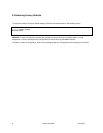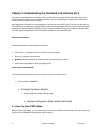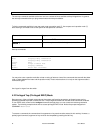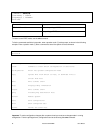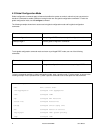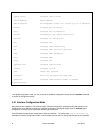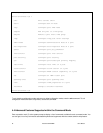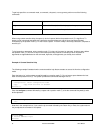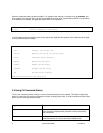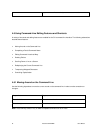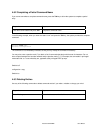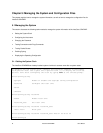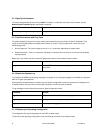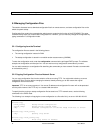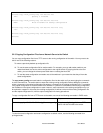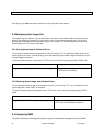
Generally, uppercase letters represent variables. For example, after entering a command, such as hostname, and
using a space and a question mark, you will be prompted for the new name, represented by WORD. In cases where
an IP address is the variable, the uppercase letters A.B.C.D will represent it.
Switch(config)# network parms ?
A.B.C.D Enter IP address of the switch
In the following access list example, seven further options are listed after the question mark. Note that what is typed
so far is preserved after the display.
Switch(Config)# access-list name acl_1 ?
add Create a new access-list
action Specify the action of the ACL entry
clear Clear ACL entry contents
delete Remove the ACL entry
enable Enable the ACL entry
disable Disable the ACL entry
set Set ACL entry contents
Switch(Config)# access-list name acl_1
4.5 Using CLI Command History
The CLI user interface provides a history or record of commands that you have entered. This feature is particularly
useful for recalling long or complex commands or entries, including access lists. To recall commands from the history
buffer, use one of the following commands:
Keystrokes/Command Purpose
Press the up arrow key Recall commands in the history buffer, beginning with the most
recent command. Repeat the key sequence to recall successively
older commands.
Press the down arrow key Return to more recent commands in the history buffer after recalling
commands with Ctrl-P or the up arrow key. Repeat the key
31 Asante IC3724PWR User’s Manual



